Part of a series of articles titled Yellowstone Science - Volume 26 Issue 1: Archeology in Yellowstone.
Previous: Archeology Facts
Article
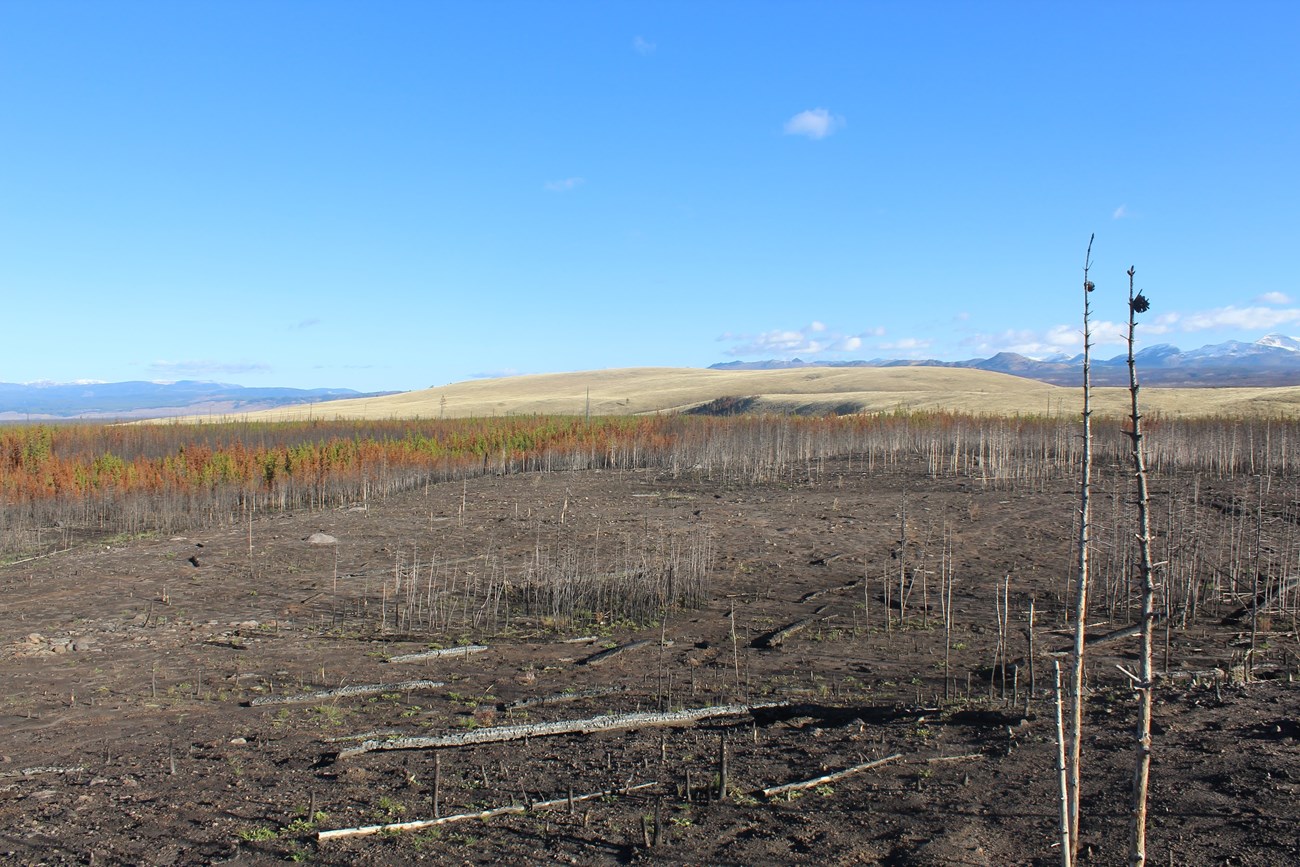
Photo - ©D. MacDonald

Photo - ©A. Knapp
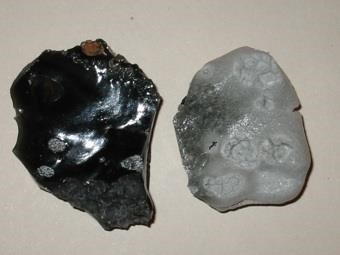
NPS Photo - A. Steffen.
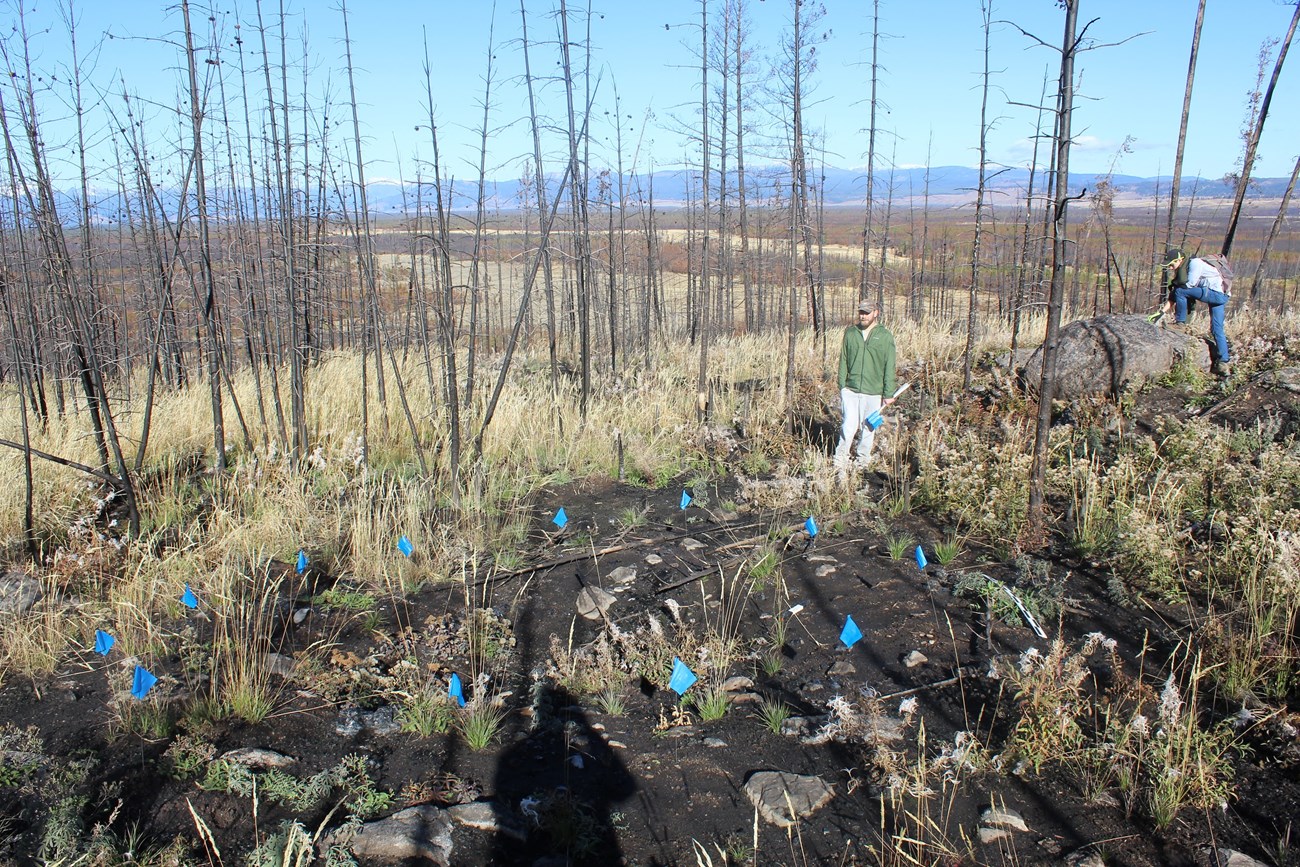
Photo - ©D. MacDonald
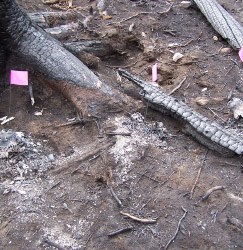
Photo - ©D. Eakin

Literature Cited
Cannon, L. 2015. Understanding climate change impacts to archaeological resources in Yellowstone National Park. Manuscript. Yellowstone Center for Resources. Mammoth, Wyoming, USA.
Chang, T., and A. Hansen. 2015. Historic and projected climate change in the Greater Yellowstone Ecosystem. Yellowstone Science 23:14-19.
Ciani, M.D. 2014 The bear in the footprint: using ethnography to interpret archaeological evidence of bear hunting and bear veneration in the Northern Rockies. Thesis. University of Montana, Missoula, Montana, USA.
Corbin, A., and M.A. Russell. 2010. Historical archeology of tourism in Yellowstone National Park. Springer Publications, New York, New York, USA.
Collins, M., R. Knutti, J. Arblaster, J.L. Dufresne, T. Fichefet, P. Friedlingstein, X. Gao, et al. 2013. Long-term climate change: projections, commitments and irreversibility. Pages 1029-1136 in T.F. Stocker, D. Qin, G.K. Plattner, M. Tignor, S.K. Allen, J. Doschung, A. Nauels, Y. Xia, V. Bex, and P.M. Midgley, editors. Climate change 2013: the physical science basis. Contribution of Working Group I to the Fifth Assessment Report of the Intergovernmental Panel on Climate Change. Cambridge University Press. Cambridge, Massachusetts, USA.
Curry, A. 2009. Climate change: sites in peril. Archaeology 62:32-35.
Davis, L.B., and A.M. Johnson. 1993. The 1989 Obsidian Cliff Plateau reconnaissance, Yellowstone National Park, Wyoming and the National Historic Landmark Nomination. National Park Service, Washington, D.C., USA.
Davis, L.B., S. Aaberg, J. G. Schmitt, A.M. Johnson. 1995. The Obsidian Cliff Plateau prehistoric lithic source, Yellowstone National Park, Wyoming. Selections from the Division of Cultural Resources No. 6. Yellowstone Center for Resources, Mammoth, Wyoming, USA.
Despain, D.G. 1990. Yellowstone vegetation: consequences of environment and history in a natural setting. Roberts Rinehart Publishers, Boulder, Colorado, USA.
Doss, P.K., and A. Bleichroth. 2012. Following the path of stone: obsidian artifacts from Indiana sourced to Yellowstone Plateau. Yellowstone Science 20(2):12-14.
Eakin, D. 2008. Evidence for Shoshonean mountain sheep trapping and early historic occupation in the Absaroka Mountains of northwest Wyoming. Manuscript. Office of the Wyoming State Archaeologist, Laramie, Wyoming, USA.
Eakin, D. 2009. Perishable Native American structures and related sites in the GYE of northwest Wyoming. Page 131 in R.E. Masters, K.E. Galley, and D.G. Despain, editors. The ’88 fires: Yellowstone and beyond conference proceedings. Tall Timbers Research Station, Tallahassee, Florida, USA.
Flannigan, M.D., K.A. Logan, B. D. Amiro, B. J. Stocks, and B.M. Wotton. 2006. Forest fires and climate change in the 21st century. Mitigation and Adaptation Strategies for Global Change 11(847–859).
Flather, R. 2003. Red Sowash and the Round Prairie Saloon. Yellowstone Science 11(4):14-16.
Fuller, M. 1991. Forest fires: an introduction to wildland fire behavior, management, firefighting, and prevention. Wiley Nature Editions, New York, New York, USA.
Hall, M.P., and D.B. Fagre. 2003. Modeled climate-induced glacier change in Glacier National Park, 1850 - 2100. BioScience 53: 131-140.
Gross J.E., M. Tercek, K. Guay, M. Talbert, T. Chang, A. Rodman, D. Thoma, P. Jantz, and J.T. Morisette. 2016. Analyses of historical and projected climates to support climate adaptation in the Northern Rocky mountains. Pages 55-77 in A.J. Hansen, W.B. Monahan, S.T. Olliff, and D.M. Theobald, editors. Climate change in wildlands. Island Press, Washington, D.C., USA.
Halofsky, J.E., D.L. Peterson, S.K. Dante-Wood, L. Hoang, J.J. Ho, L.A. Joyce. 2017. Climate change vulnerability and adaptation in the Northern Rocky Mountains. General Technical Report. U.S. Department of Agriculture, Forest Service, Fort Collins, Colorado, USA.
Hartmann, D.L., A.M.G. Klein Tank, M. Rusticucci, L.V. Alexander, S. Brönnimann, Y. Charabi, F.J. Dentener, et al. 2013. Observations: atmosphere and surface. Pages 159-254 in T.F. Stocker, D. Qin, G.K. Plattner, M. Tignor, S.K. Allen, J. Boschung, A. Nauels, et al., editors. Climate change 2013: the physical science basis. Contribution of Working Group I to the Fifth Assessment Report of the Intergovernmental Panel on Climate Change. Cambridge University Press, Cambridge, Massachusetts, USA.
Johnson, A.M. 2010. An overview of precontact archeology in Yellowstone. Yellowstone Science 18(1):24-28.
Johnson, A.M., and B.O.K. Reeves. 2013. Summer on Yellowstone Lake 9,300 years ago: the Osprey Beach Site. Plains Anthropologist 58.
Knapp, A. 2006. Archaeology under fire: the impacts of forest fire on archaeological inquiry. Poster presentation. 64th Plains Anthropological Conference, Topeka, Kansas, USA.
Lee, C.M. 2014. Archaeological survey of perennial ice patches on Table Mountain, Yellowstone National Park and the Trident Plateau, Yellowstone National Park and Bridger-Teton National Forest: results of the 2013 field season. Technical Report. Institute of Arctic and Alpine Research, Boulder, Colorado, USA.
Lee, C.M., R.L. Kelly, R. Reckin, I.L. Matt, and P.L. Yu. 2014. Ice patch archaeology in western North America. SAA Archaeological Record 14:15-19.
Lee, C.M., and K. Puseman. 2017. Ice patch hunting in the Greater Yellowstone Area, Rocky Mountains, USA: wood shafts, chipped stone projectile points, and bighorn sheep (Ovis Canadensis). American Antiquity 82:223-243.
Littell, J.S., M.M. Elsner, G. Mauger, et al. 2011. Regional climate and hydrologic change in the northern US Rockies and Pacific Northwest: internally consistent projections of future climate for resource management. Climate Impacts Group, University of Washington College of the Environment, Seattle, Washington, USA.
Littell, J, D.L. Peterson, K. Riley, Y. Liu, and C. Luce. 2016. A review of the relationships between drought and forest fire in the United States. Global Change Biology. 22(7):2353-69.
Livers, M. 2012. Stone circles in Yellowstone. Yellowstone Science 20(2):5-11.
Loehman, R.A., R.E. Keane, L.M. Holsinger, and Z. Wu. 2017. Interactions of landscape disturbances and climate change dictate ecological pattern and process: spatial modeling of wildfire, insect, and disease dynamics under future climates. Landscape Ecology 32(7):1447-1459.
MacDonald. D. 2018. Before Yellowstone: Native American archaeology in the national park. University of Washington Press, Seattle, Washington, USA.
MacDonald, E.H. 2012 Yellowstone archaeology: Southern Yellowstone. University of Montana Contributions to Anthropology Volume 13(2). University of Montana Office of Printing and Graphics, Missoula, Montana, USA.
Marcus, W.A., J.E. Meacham, A. Rodman, and A.Y. Steingisser. 2012. Atlas of Yellowstone. University of California Press, Berkeley, California, USA.
Melnick, R.Z., O. Burry-Trice, and V. Malinay. 2015. Climate change and cultural landscapes: research, planning, and stewardship. National Park Service, National Center for Preservation Technology and Training. University of Oregon, Eugene, Oregon, USA.
Nabokov, P., and L. Loendorf. 2002. American Indians and Yellowstone National Park: a documentary overview. Yellowstone National Park, Yellowstone Center for Resources, Mammoth, Wyoming, USA.
National Park Service (NPS). 2010. National Park Service climate change response strategy. National Park Service, Climate Change Response Program, Fort Collins, Colorado, USA.
National Park Service (NPS). 2015. Special issue: ecological implications of climate change on the Greater Yellowstone Ecosystem. Yellowstone Science 22:1-88.
National Park Service (NPS). 2016. Cultural resources climate change strategy. National Park Service, Cultural Resources, Partnerships, and Science and Climate Change Response Program, Washington, D.C., USA.
Park, R. 2010. A culture of convenience? Obsidian source selection in Yellowstone National Park. Thesis. Department of Archaeology and Anthropology University of Saskatchewan, Saskatoon, Saskatchewan, Canada.
Peterson, D.L., and J.S. Littell. 2014. Risk assessment for wildfire in the western United States. Pages 232-235 in D.L. Peterson, J.M. Vose, and T. Patel-Weynand, editors. Climate change and United States forests. Springer, New York, New York, USA.
Reckin, R. 2013. Ice patch archaeology in global perspective: archaeological discoveries from alpine ice patches worldwide and their relationship with paleoclimates. Journal of World Prehistory 26:323-385.
Reynolds, J.R, and A.M. Johnson. 2003. A volunteer’s perspective, and archeology 101. Yellowstone Science 11(3):10-13.
Romme, W.H,. and M.G. Turner. 1992. Global climate change in the Greater Yellowstone Ecosystem. Yellowstone Science 1(1):2-5.
Romme, W.H. and M.G. Turner. 2015. Ecological implications of climate change in Yellowstone: moving into uncharted territory? Yellowstone Science 23:6-11.
Scott, J.H., and R.E. Burgan. 2005. Standard fire behavior fuel models: a comprehensive set for use with Rothermel’s surface fire spread model. RMRS-GTR-153. U.S. Department of Agriculture, Forest Service, Rocky Mountain Research Station, Fort Collins, Colorado, USA.
Seifert, D., E. Chatelain, C. Lee, Z. Seligman, D. Evans, H. Fisk, and P. Maus. 2009. Monitoring alpine climate change in the Beartooth Mountains of the Custer National Forest. RSAC-0115-RPT1. U.S. Department of Agriculture, Forest Service, Remote Sensing Applications Center, Salt Lake City, Utah, USA.
Tercek, M. 2015 A seemingly small change in average temperature can have big effects. Yellowstone Science 23:70-71.
Tercek, M., A. Rodman, and D. Thomas. 2015. Trends in Yellowstone’s snowpack. Yellowstone Science 23: 20-27.
Thompson, L.G., H.H. Brecher, E. Mosley-Thompson, D.R. Hardy, and B.G. Mark. 2009. Glacier loss on Kilimanjaro continues unabated. Proceedings of the National Academy of Science. 106 (47):19770-19775.
U.S. Geological Survey. 2017. Retreat of glaciers in Glacier National Park. https://www.usgs.gov/centers/norock/science/retreat-glaciers-glacier-national-park
Winthrop, K. 2015. Bare bones guide to fire effects on cultural resources for cultural resource specialists. U.S. Department of the Interior, Bureau of Land Management. https://www.ncptt.nps.gov/articles/disasters/wildland-structural-fire/fire-and-cultural-resource-management-fire-preparedness-3/bare-bones-guide-to-fire-effects-on-cultural-resources-for-cultural-resource-specialists/
White, D.R.M., and K.L. White. 2012. Wikiups of the Greater Yellowstone Ecosystem: conical timber lodges within Bridger-Teton National Forest, Grand Teton National Park, Shoshone National Forest, and Yellowstone National Park. National Park Service, Yellowstone National Park, Yellowstone Center for Resources, Mammoth, Wyoming, USA.
Whitlock, C. 1993. Postglacial vegetation and climate of Grand Teton and southern Yellowstone National Parks. Ecological Monographs 63(2):173-198.
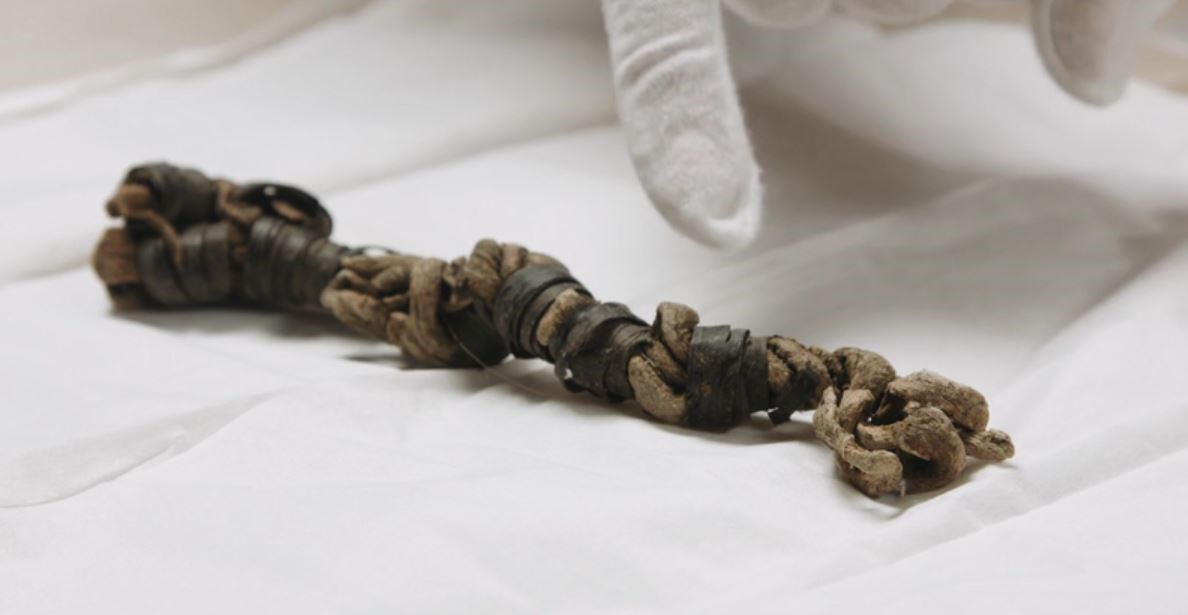
Photo - ©C. Lee
Part of a series of articles titled Yellowstone Science - Volume 26 Issue 1: Archeology in Yellowstone.
Previous: Archeology Facts
Last updated: July 20, 2022